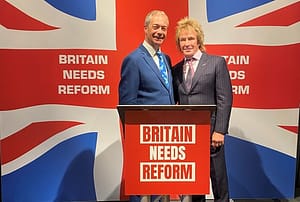Ethnic minorities are dramatically under-represented at senior level. Who’s to blame, and should you care?
How white is your management team? Are one in seven of your staff black, Asian or ethnic minority – which would be representative of British society – or have you never really thought about it? When you look for new staff, are you monitoring for unconscious bias?
Do these questions make you feel uncomfortable?
I wouldn’t be surprised if they do. The subject of race has become almost taboo in discussions about diversity in business. For all the incredibly important focus we’ve seen recently on gender balance in the boardroom, social mobility and disability access, the issue of race seems to have slipped quietly out the room.
But we have a very real problem with racial diversity at senior-management level in British business.
UK society is 14% non-white, according to the most recent government figures. Yet only 3.3% of executive directors are black, Asian or minority ethic (BAME), according to Business in the Community’s 2013 Benchmarking Report, the UK’s most comprehensive diversity monitor. That percentage has dropped from 5% in 2012. Almost 92% of FTSE 100 board directors are Caucasian, according to ISS Corporate Services’ UK State of Play 2012 study.
The chart below from Business in the Community’s research shows how starkly BAME representation drops off as seniority within a UK company increases. (It’s notable that BAME representation is higher than in society-at-large below management level.)

These stats will probably not come as any great surprise to you, even if they do make the situation rather bald.
After all, the FTSE 100 only welcomed its first black CEO four years ago, with the appointment of Tidjane Thiam at Prudential.
Anyone with a window into the executive strata of British business can testify that it is still overwhelmingly white, male and middle class.
Why are we seeing four times less BAME representation at executive director level than we should? Why is there such a pronounced drop-off of BAME representation as you move up the ranks of UK companies?
Is British business racist?
Racial diversity: why you should care
Before we get into exploring our diversity predicament, it’s worth looking at why all this even matters.
After all, why should you care?
Well, even if you’re not the type of person who is bothered about what all this says about our society, there are powerful commercial reasons for wanting to redress the imbalance at leadership level.
Virtcom Consulting has calculated that greater race and gender diversity on corporate boards is associated with a 16.2% return over five years compared to lower economy-wide averages. The government’s 1998 UK Workplace Employee Relations Survey found that workplace productivity improves as the share of female and ethnic minority employees increases.
“How can we can communicate with the full range of society if all our people are identi-kit, middle-class, got-in-through-a-contact?”
Mark McLane, MD of diversity at Barclays, believes a more diverse workforce enables the bank to better understand its customers in our increasingly diverse world. When you have people from different backgrounds sitting round the meeting-room table, you understand different markets. “We work in a global organisation. We do need to have voices heard – and it drives innovation.”
Sandra Kerr OBE, national campaign director for Business in the Community’s racial diversity programme Race for Opportunity, agrees. “For businesses it’s recognising that people working with you from those groups can have additional insights that allow you to break into new networks of communities and customers that you might not have direct access to [otherwise].”
This will become increasingly important as our population’s ethnic make-up evolves. The proportion of ethnic-minority groups in the UK is set to increase to 40% by 2050, according to the Migration Observatory at the University of Oxford. More than one in four primary school children today are from an ethnic minority.
Diversity awareness also makes you able to attract a stronger talent pool. McLane says: “To have best talent we have to be better and recruit, retain, develop and promote a more diverse colleague base.” This is particularly the case for companies hoping to attract candidates who might be weighing up opportunities not just in different companies, but in different countries.
But it’s not just multinationals that should be considering the racial diversity of their workforces. Taylor Bennett is an executive search firm with around 20 employees. It places some of the world’s most senior communications professionals. Burberry, Tesco and Bill and Melinda Gates are clients.
Greater diversity on corporate boards is associated with a 16.2% return over five years
Over the past few years, it has started receiving requests for more racially-diverse candidate shortlists. Taylor Bennett’s Anne Groves says: “Agencies have been saying, ‘Now how can we claim to clients we can communicate with the full range of society if all our people are identi-kit, middle-class, got-in-through-a-contact.’ I’m not saying [those people] are not excellent, but there’s nothing in it for the business to restrict the pool of talent you’re taking on.”
Taylor Bennett struggled to find candidates outside that stereotype. So in 2008, it established the award-winning Taylor Bennett Foundation. This delivers two-month training programmes for black and minority-ethnic graduates.
Groves became a director of the foundation as well as being a consultant with the main company. She says the foundation started “because there was a business case for it”. Investing in these young people will not pay off for years – until they reach director level – but “that’s how we work; we keep relationships with candidates for many years and we know these will be candidates for the future”.
As well as that: “There are definitely reputational benefits and brand-building benefits rather than direct business benefits. And it’s tremendously satisfying to see trainees at the end of course so much more polished than at the beginning. Then you think: actually this is amazing.”
Taylor Bennett staff enjoy volunteering their time, helping employee engagement, and the cause “gives us something really substantive to talk about [publicly] as well as what we do”.
Why are Britain’s senior business ranks overwhelmingly white?
This might all be old news to you. Kerr says that the businesses she talks to are largely already aware that a racially diverse workforce “is the only way ahead”.
So why aren’t we seeing more BAME representation in top roles?
The first challenge is an unfortunate self-fulfilling prophecy: a lack of senior BAME role models to inspire junior people into believing they can make it to the top. Kerr explains: “People need something to aspire to, and what role models do in a workplace is imply: you are included here, your potential will be realised here, and there is no barrier – that’s the subtext they give.”
Groves feels that in her industry it comes
down to “a lack of awareness and a lack of access”. Entering the world of PR and communications often means doing internships secured through parents’ professional connections, “and that cuts out a lot of people out”.
More broadly, a lack of public focus on racial diversity has made these problems more entrenched. Kerr feels that in the last year or two gender has dominated public discussion about diversity in the workplace. “There is a strong perception that because the media only reports on gender, and government has come up in support of gender, […] race has not been on the government radar.
“They’ve shown no interest [in racial diversity] so therefore it doesn’t get the implicit kind of recognition and ‘endorsement’ that gender does.” That means businesses do not feel the obligation or impetus or inspiration to look at racial diversity in their own workplaces.
The coalition government has veered away from the positive work made by the Labour government in this area, Kerr believes. “They absolutely recognised that there were inequalities linked to race: […] unemployment rates, education outcomes, access to university.” She feels racial diversity now is almost ignored as a political issue.
Are businesses to blame too?
But the unpalatable truth is that it’s not only societal factors fuelling the drop-off in BAME representation as seniority increases.
There is something going fundamentally wrong in organisations’ recruitment processes too.
This chart from Business in the Community’s Diversity Monitor makes it uncomfortably clear that in the private sector, there appears to be some kind of bias against BAME candidates:

This is not to say recruiters are racially prejudiced. From the accounts we’ve heard so far, quite the opposite is true – businesses are largely keen to increase the racial diversity of their workforces to improve their competitiveness.
The trouble is, however fair-minded someone is, most people suffer from some degree of unconscious bias. People tend to recruit in their own images, even though most people are entirely unaware they do so, and would be horrified to think that they are being prejudiced in any way.
On top of that, the societal factors outlined above mean that companies may have to work harder to recruit for a more diverse workforce than they think.
The great news is that there are a range of things you can do to work towards a more racially diverse workforce, if you need to do so – and the first steps are very simple.
Creating a more racially diverse workforce: what you can do
“All employers could be doing something,” says Kerr. She says “large employers have the absolute opportunity and responsibility to lead the way”, but even small companies can take action.
Benchmarking the diversity of your recruitment against the community you operate in is “absolutely the starting point”, Kerr explains. “Just check census data on what your city or region looks like, then aim for your recruitment selection pool and talent pool to at some level reflect that.”
We’re not talking about positive discrimination here, but rather making sure your shortlist of candidates reflects society ahead of making a final decision. Make recruitment firms you work with aware of your diversity aims too.
Unconscious bias training is vital if you want to make a serious commitment to diversity. “We’ve all got bias – and it’s important to go in recognising that,” says Kerr. She says unconscious bias training helps recruiters see beyond the “typical skills portfolio” often specified as a requirement to identify raw talent.
It’s then important to assess your own recruitment processes. Kerr explains: “Maybe you’ll think it was fine, but actually everyone who got a job ended up being white, so what went wrong? You had 20% [non-white candidates] applying, then only 3% at the hiring stage. I think looking at that is really important so you can start to identify where that drop-off happened and why.”
Larger companies can consider a fuller diversity strategy. Barclays, for example, has implemented one working across all spheres of diversity, beyond just race, that includes “a leadership development programme unpacking unconscious bias in talent management, where all MDs and globally and locally 8,000-plus leaders start to unpack all aspects of diversity,” McLane explains.
It provides an apprenticeship scheme “very specifically focusing on young ethnic minorities here in London”. It has “multiple ways” of benchmarking, including winning external awards. “Internally, we continue to monitor retention and hiring stats.” An employee engagement survey, internal mentoring and “listening groups” – formalised focus groups centring on certain aspects of diversity – ensure staff are listened to. It also means that their insights into different cultures can be used to feed innovation and understanding of customers.
Large companies have the potential to influence beyond their own organisation too. Kerr says that increasingly big firms are extending their diversity strategy to their supply chains, “to influence those that work with them and to ensure the businesses working for them are working on the same principles as they are”.
You might even launch a mentoring programme or awareness campaign, as Taylor Bennett has done. But the point is: some action is better than none.
And the benefits of doing anything to improve the racial diversity of your business extend beyond businesses themselves. British companies have the potential to better our society.
“Business leaders need to up-skill, to encourage, to inspire, to participate,” says Kerr. “This is about our future and our country – we have to tackle these challenges now.”
What are you waiting for?
Let me know what you think @LondonlovesBiz and @sophiehobson
NOW READ THIS: The 10 innovation trends to help grow your business in 2014
DEADLINE EXTENDED BY POPULAR DEMAND: Get your business and talent recognised – enter the London Loves Talent Awards by 24 December
Judged by Tim Campbell, Will King, Terry Morgan CBE, Amit Bhatia, Matthew Hancock MP, June Sarpong & more








Leave a Comment